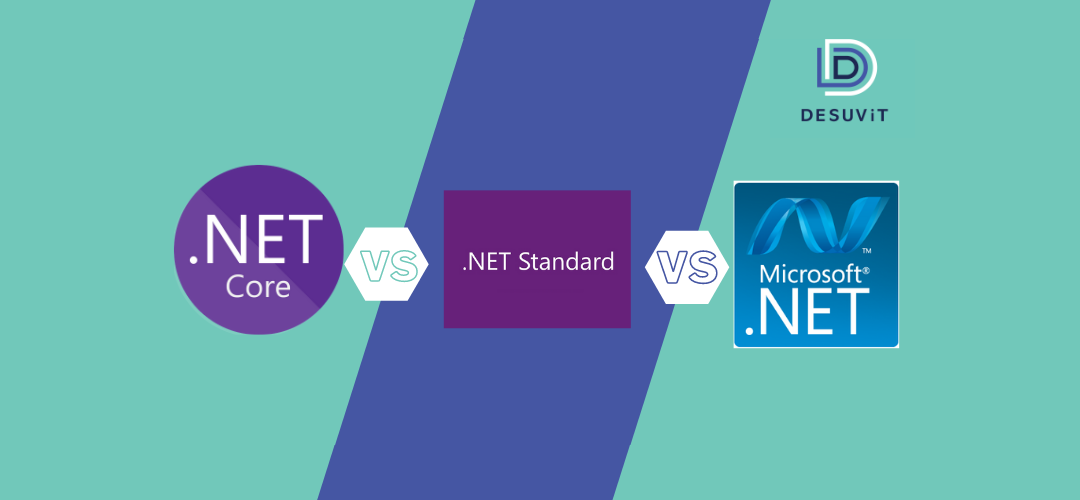When it comes to the .Net ecosystem, a developer can be confused about what platform to build the project on. Being such a vast, free, and mostly open-source platform, .Net by Microsoft offers a holistic space for developers to build applications.
Whether you’re designing an application for web, desktop, mobile, gaming, artificial intelligence, or IoT, .Net has everything to get you started. Regardless of your application being cross-platform or targeted for a particular operating system, understanding the difference between .Net implementations is necessary.
What Is .NET?
.Net is an open-source cross-platform that can build web, cloud, mobile, and desktop applications. Additionally, you can use it to develop artificial intelligence, gaming, IoT applications too. Created by Microsoft, .Net is open source and super versatile for developers to quickly and efficiently build different applications.
You can access multiple libraries, editors, and languages to develop applications across all platforms. .Net is a unified platform, and the ecosystem has a common runtime, library, tools, and language compilers. You can write the application in multiple languages like F#, C#, and Visual Basic in .Net.
When developers design software and applications, they have to make sure it works on all devices. With so many platforms like Linux, Windows, Mac, and devices like tablets, smartphones, laptops, and desktops, the variety is endless. Here is where .Net brings relief by offering a unified platform for software development for all platforms and devices.

Understanding .Net Core
If you use Github regularly, then you might know about .Net Core. .Net Core is an open-source and cross-platform version of .NET that you can find on several Github repositories. .Net Core is maintained and updated by the .Net community and also Microsoft.
It was initially launched under MIT, Creative Commons Attribution 4.0, and Apache 2. It helps to build and develop applications that can be accessed on several platforms. It’s free like all .Net services.
Suppose you want to use the latest version, it’s best to get your hands on .Net Core 3.1. Originally launched on December 3rd, 2019, the latest update was made available on February 18th, 2020.
Are you wondering what frameworks are available in .Net Core 3.1? You can find modern frameworks like ML.Net, gRPC for Machine Learning applications, UWP, Blazor used for Web Assembly, and ASP.Net Core in Razor Pages. .Net Core comes with its integrated CLI (Command Line Interface).
The runtime for .Net Core is CoreCLR that has GC, JIT (Just-in-time Compiler), and other low-level classes included. Other essential developer tools in .Net Core include CoreFX, which consists of foundation class libraries. If you had to compare with .Net Framework, CoreCLR and CoreFX are like the CLR BCL of .Net Core.
Understanding .Net Framework
.Net Framework was developed as a runtime execution environment and is the first implementation of .Net. Unlike Microsoft .Net Core, .Net Framework is used to build applications that can run only on the Microsoft Windows platform.
The most recent and last version of .Net Framework to be available for users is .Net Framework 4.8 (released on April 18th, 2019). If you’re looking to create a new application, it’s best to use .Net 5.0 or later versions. However, the .Net Framework will continue to be available as Microsoft has no plans to remove it from Windows.
.Net Framework offers language independence with common runtime, an all-encompassing class library, and various system services. With so many advanced development technologies and framework avenues, you can develop apps quickly in .Net Framework.
You can use ASP.Net for web applications, WinForms, Windows Communication Foundation for service applications, ADO.Net for data access, and Silverlight. The main modules of .Net Framework are CLI (Common Intermediate Language), BCL (Base Class Libraries), and CLR (Common Language Runtime).
The CLI is an intermediary code generated by .Net Framework, making it easy for other languages to access the same principle. Developers love this because they can access any .Net Framework applications irrespective of the developing language.
Understanding .Net Standard
If you’re looking for a .Net specification that can be used across every .Net implementation, then .Net Standard is what you need. Especially if you have library projects, then developing them on .Net Standard is the most straightforward option.
.Net Standard was developed to achieve some kind of uniformity across the .Net ecosystem. .Net Standard has access to .Net Core and .Net Framework libraries as well. It creates uniformity and interoperability across all .Net implementations.
.Net Standard supports Xamarin, Mono platform, Unity, and Universal Windows Platform. You can refer to the compatibility chart to select the appropriate .Net Standard version that has the right packages. .Net Standard library is the unifying factor doing all projects in your .Net ecosystem share specific libraries.
Every .Net Standard implementation comes with a set of APIs which include, System.Collections, System.Data, and System.Runtime, to name a few. Worry not; if you’re using a newer version of .Net Standard, then the existing APIs from previous versions will still be available. So, if you have a higher version of .Net Standard, you have more APIs at your disposal.
What Is The Difference Between .Net Core, .Net Framework, And .Net Standard?
| Criteria for Difference | .NET Core | .NET Framework | .NET Standard |
| Purpose | To develop new applications. | For fixing bugs and maintaining existing applications. | It is used to build library projects. |
| Where can it be used? | Cross-Platform | Only Windows | Cross-Platform |
| Execution Efficiency | High Performance | Average Performance | – |
| Accessibility | Open Source | Private | Open Source |
| Main Building Blocks | CoreCLR and CoreFX | CLR and BCL | – |
| Supports Visual Studio? | Visual Studio / Visual Studio Code | Visual Studio | Visual Studio / Visual Studio Code |
| Subscription | Free | Free | Free |
About The Latest .Net 5.0
With the latest release of .Net 5.0 in November 2020, the .Net ecosystem is more unified than ever. .Net 5.0 aims to have all the best features from .Net Core, Mono, .Net Framework, and Xamarin. The .Net 5.0 will be built on CoreFX. With a more simplified and standardized platform, .Net 5.0 will offer interoperability and AOT Compilation.
Endnotes
Now that you know the difference between .Net Core, .Net Framework, and .Net Standard, you can make wiser choices when developing applications! Do reach out to Desuvit, if you need skillful advice or help with software frameworks like .Net Core, .Net Standard, and .Net full framework.
Desuvit is a Norway-born software development company delivering Custom Software Development, Mobile Apps, and Web Applications Development for various verticals and business domains. We offer end-to-end solutions for companies with no software or IT division, Startups, and companies that need to scale their software development efforts but lack the expertise required. We help our clients in growing their businesses so we can grow with them. Some of the technologies we work with: .Net, Azure, Microservices, Azure functions(Serverless computing), React Native, Flutter, React JS, TypeScript, Angular, NServiceBus, Azure Service Bus, Azure Queues, SQL Service, MySQL, Cosmos DB, etc.
Enjoyed this article? Subscribe for more valuable and great content !
By subscribing, you agree with our privacy policy and our terms of service.





